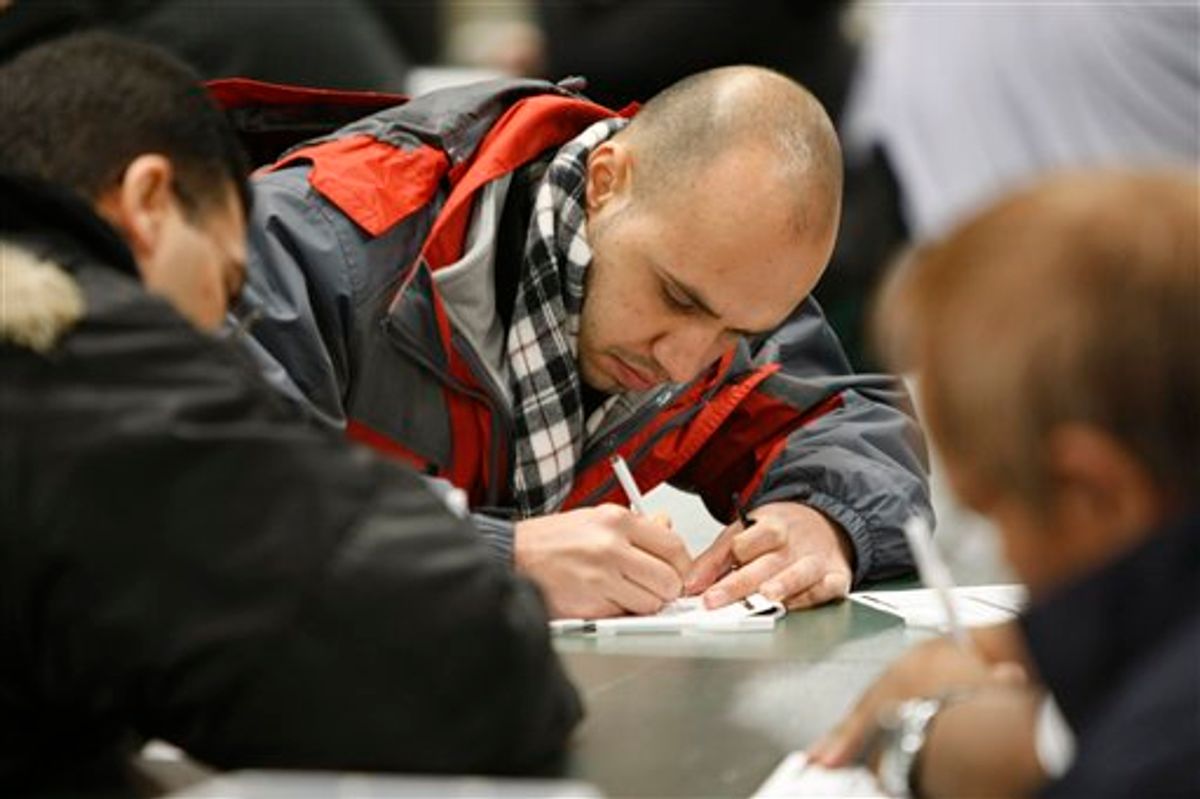A surprise from the Bureau of Labor Statistics: The unemployment rate in January dropped from 10 percent to 9.7 percent, instead of rising to 10.1 percent, as had been predicted by the ever-unreliable "consensus" of economists who amuse themselves by trying to guess labor market ups and downs.
Non-farm payroll employment declined by 20,000, which one can consider either not too bad (especially compared to a year ago, when payrolls plunged by 779,000) or not too good (many economists were expecting a slight rise) or completely irrelevant: In the new report, the BLS adjusted November 2009's 4,000 upward tick to a whopping 65,000 jump, and December 2009's 85,000 decline to a big 150,000 drop. So who knows what to think of the new number? Added bonus: The figure is almost exactly the same as that reported by the ADP on Wednesday, which hasn't happened in recent memory. (And shouldn't, since the ADP only measures private payrolls, while the BLS includes government jobs.)
The big loser: construction, down by 75,000 jobs in January -- mostly due to the collapse of the commercial real estate market. But manufacturing was up, retail trade employment grew by 42,000, and the federal government added 33,000 jobs, including 9,000 temporary Census hires.
The ever popular "U-6" measure of unemployment, which puts together "Total unemployed, plus all persons marginally attached to the labor force, plus total employed part time for economic reasons, as a percent of the civilian labor force plus all persons marginally attached to the labor force" fell, on a seasonally adjusted basis, from 17.3 percent to 16.5 percent.
Also worth noting, the BLS reported significant revisions to all monthly payroll data for the previous year, in some cases by as much as 100,000 downwards (March 2009). In the first three months of 2009, the BLS now estimates the economy lost more than 2.2 million jobs. I'm not sure, but I'm wondering if any U.S president in the last 100 years faced such an abrupt unemployment disaster in his first three months of office.
More analysis later today, as we try to figure out why exactly the unemployment rate dropped, even as job losses continued.



Shares